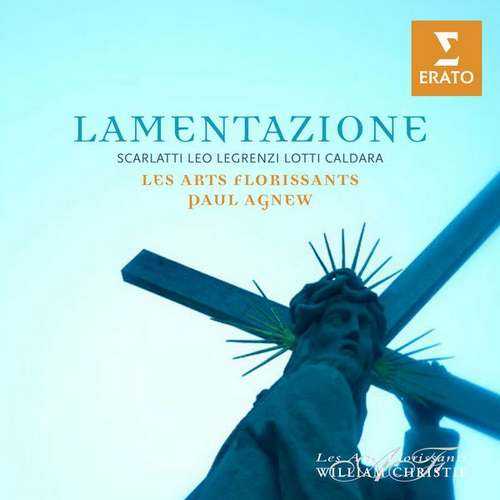
Performer: Les Arts Florissants
Conductor: Paul Agnew
Audio CD
Number of Discs: 1
Format: FLAC (tracks)
Label: Erato
Size: 538 MB
Recovery: +3%
Scan: yes
Domenico Scarlatti:
01. Stabat Mater a 10 voci
Virginie Thomas soprano, Sean Clayton tenor
Antonio Lotti:
02. Crucifixus a 10i
Giovanni Legrenzi:
03. Quam Amrum est Mariai
Hannah Morrison, Maud Gnidzaz sopranos
Antonio Caldara:
04. Caldara: Crucifixus a 16 vocii
Leonardo Leo:
05. Miserere (à 8 voix)i
Antonio Lotti:
06. Crucifixus in 8 partsi
Les Arts Florissants:
Sopranos
Francesca Boncompagni, Héloïse Derache,
Nicole Dubrovich, Élodie Fonnard,
Maud Gnidzaz, Hannah Morrison,
Brigitte Pelote, Virginie Thomas
Mezzo-sopranos
Brigitte Le Baron, Anne Maugard
Countertenors
Jean-Paul Bonnevalle, Bruno Le Levreur
Tenors
Sean Clayton, Nicolas Maire,
Michael-Loughlin Smith, Marcio Soares Holanda
Basses
Virgile Ancely, Laurent Collobert,
Christophe Gautier, Marduk Serrano Lopez
Continuo
Paul Carlioz cello
Massimo Moscardo theorbo
Florian Carré organ
Les Arts Florissants
Paul Agnew
Recorded: 2010-09-25
Recording Venue: 25 September 2010. Abbaye d’Ambronay.
Here’s a beautiful collection of Baroque choral music from a repertory that’s been somewhat neglected, perhaps because its most substantial representative, Domenico Scarlatti’s Stabat Mater à 10, has been transmitted in versions that don’t make a clear performance practice obvious. Lamentazione, or laments for the crucified Jesus Christ, called forth an antique style, with heavy use of polyphony and sometimes polychoral (multiple-choir) textures. Yet the composers represented here didn’t simply write pieces in the Palestrina style: they intensified the old polyphonic idiom with rich chromaticism and expressive dissonances. The model for some of them was Scarlatti’s piece, which was extraordinarily popular in the 18th century. Its ten parts do not divide into two choirs of five, but are put together into constantly shifting groups that add an expressive variety of textures to the work’s rich harmonic language. Some of the verses are reduced to solo voices in other performances, but Les Arts Florissants, under newly deputized conductor Paul Agnew, make a persuasive case here for choral performance throughout: the textures are plenty varied as it is. In the program here variety is provided by the solo performance of Legrenzi’s Quam amarum est, Maria. Crucifixus settings by Lotti and Caldara are similar in texture to the Scarlatti, but the Miserere of Leonardo Leo, elsewhere one of the most progressive composers of the early 18th century, is a full-scale and magnificent reversion to the Venetian polychoral style. It was well known in the 19th century, and even Wagner admired it. But it’s rarely heard nowadays. Les Arts Florissants deploy a 20-voice choir, just big enough to fill the musical spaces involved but small enough to keep the polyphonic moves clear, and their singing, recorded in live performances, is intense and expressive. A very strong Baroque choral release from Virgin Classics.